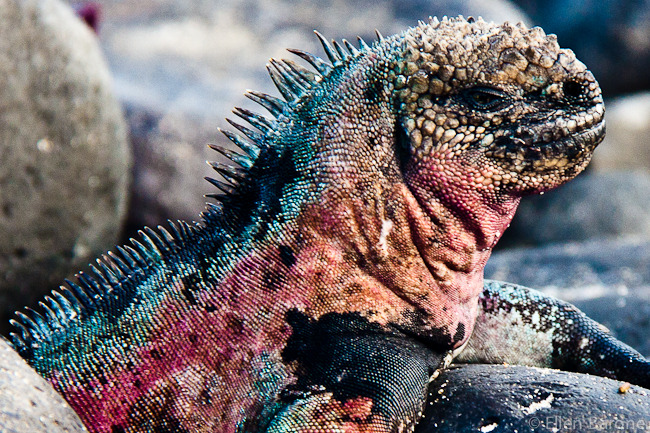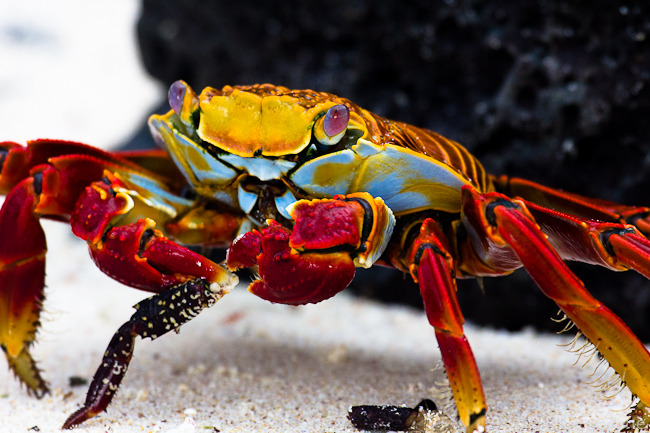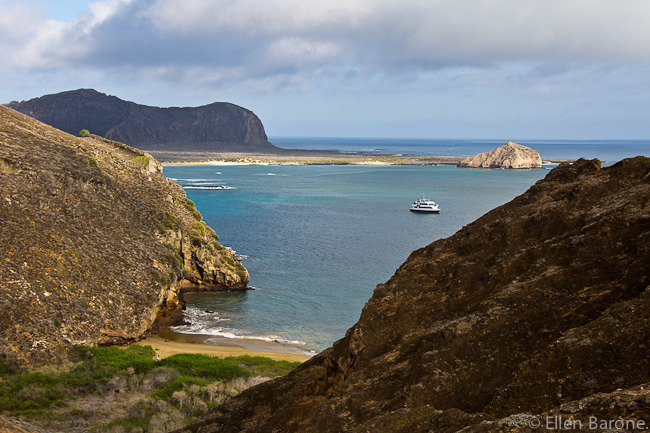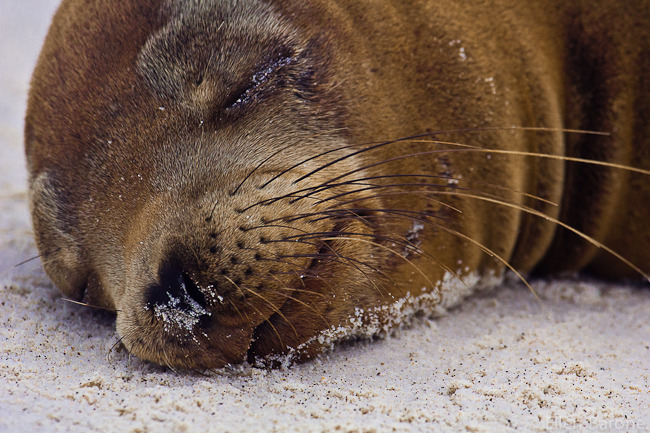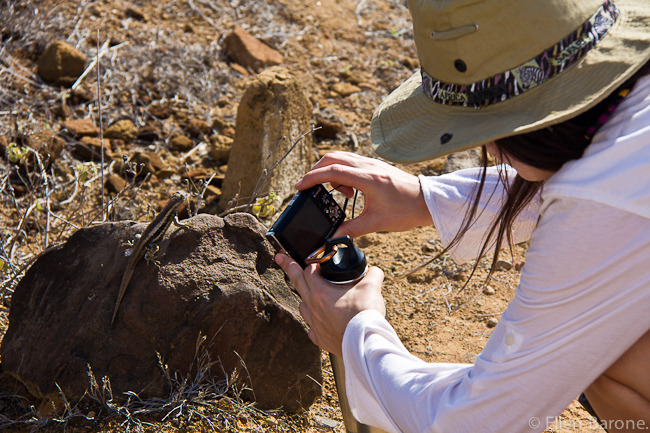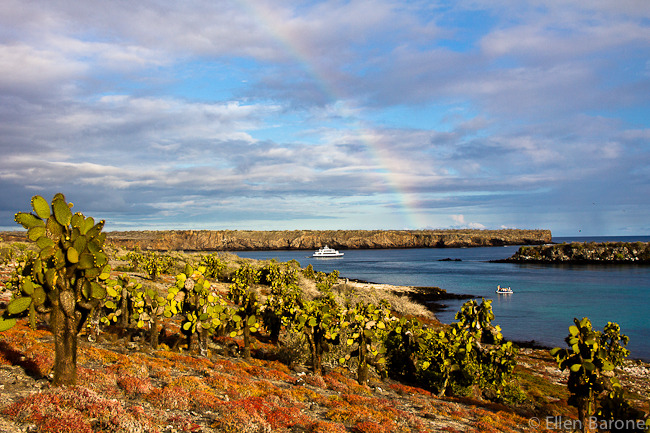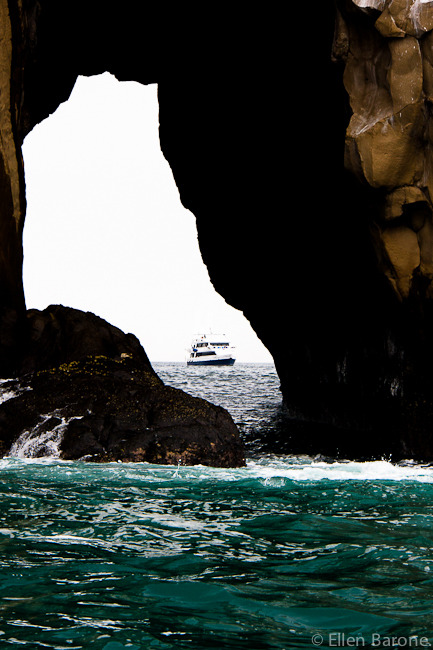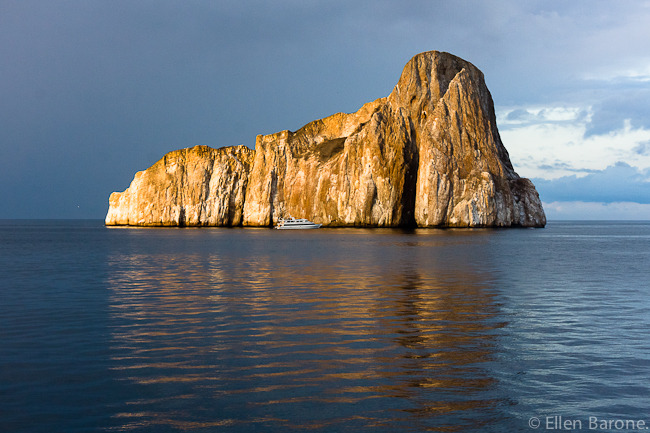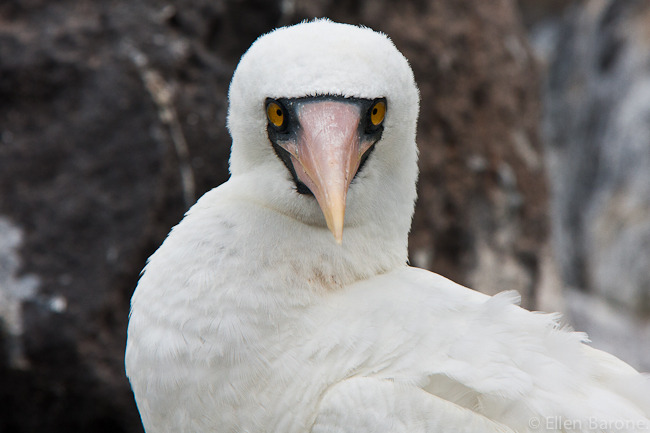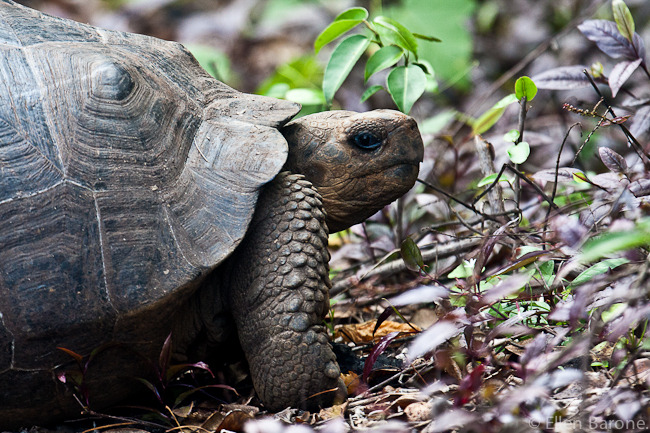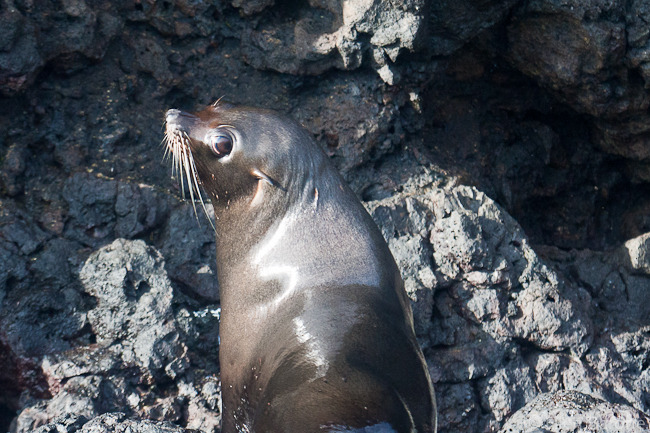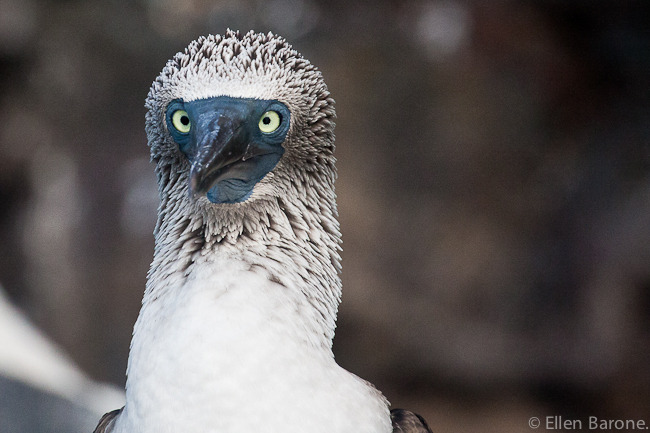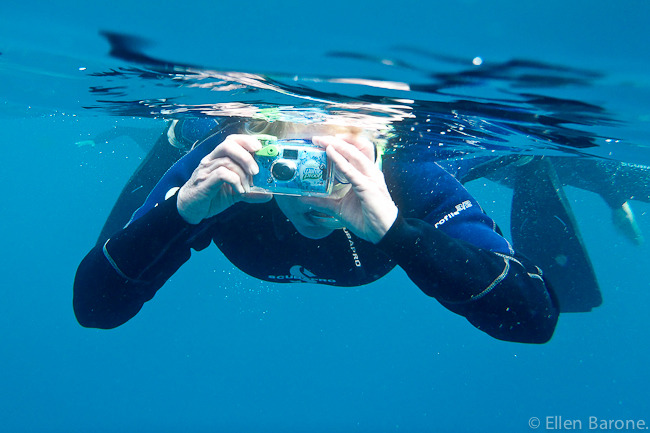I admit it. Reptiles creep me out. I find them as cute and cuddly as Hannibal Lecter. But there I was, face to scaly face, happily snapping photo after photo of iguanas: self-appointed paparazzi of the Galapagos Islands.
Mother Nature can do that to me. One day I’m going about my rich yet ordinary life–work, hang out with Hank, read, nap, eat, walk, meet up with friends, eat again, read some more. The next, I’m stalking lizards like a star struck groupie at the Oscars.
Ecuador’s famed archipelago is home to some of the most unusual reptiles on the planet: giant lumbering tortoises, beady-eyed iguanas, graceful sea turtles, and piggybacking lava lizards. And, unlike most celebrities, they couldn’t care less if I took their picture.
That was true, too, of the nimble crabs, puppy-eyed seals, rollicking sea lions, stealthy reef sharks, exotic birds and 400 species of fish that seemed to consider camera-toting tourists about as scary as a nattering grandmother.
That’s the mind-blowing power of a Galapagos vacation. Nowhere else in the world can you safely interact with wildlife at such close range, both above and below the water.
But therein lies the rub. Ever since Darwin immortalized the place, the Galapagos Islands have become one of the world’s most popular tourist attractions. So popular, in fact, that as of February 1, 2012, the Galapagos National Park Service instituted a new set of travel regulations designed to help protect the archipelago’s unique ecosystems.
Our early February 8-day voyage aboard the 20-passenger M/V Letty with Ecoventura put us among the first passengers to enjoy the company’s new itineraries introduced to help reduce usage on heavily visited sites.
Coming off an extended stay in Nicaragua, a naturally stunning but poverty stricken country with a serious solid waste problem, I was impressed by the pristine condition of the islands. No floating plastic. No stray Cheetos bags tumbling across the beach. No mounds of discarded garbage. No rusting washing machines hidden away down weed-tangled ravines. Just pure wildness, up close and personal.
Equally impressive was the fact that rarely did our shore explorations or snorkel adventures amidst the island’s prime wildlife zones coincide with other cruisers. “There used to be a dozen boats at this site,” said naturalist guide, Jose Castillo, as we anchored alone off Punta Suarez at Isla Española.
Like Disney World’s network of secret tunnels under the Magic Kingdom, the new park service rules serve to minimize gridlock and disperse traffic, while preserving the quality of the Galapagos experience right along with the fragile ecosystems.
About Ecoventura:
Since 1990, Ecoventura has been leading the way insustainable expedition cruisingin the Galapagos Islands. Ecoventura operates a fleet of four expedition vessels in the Galapagos Islands cruises catering to active adults and families; the Eric, Flamingo & Letty, superior first-class 20-passenger motor yachts, with departures every Sunday on two alternating 7-night itineraries including the outer, most spectacular islands in the archipelago. www.Ecoventura.com; 1-800-633-7972.



